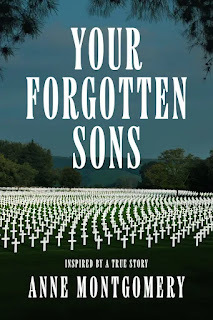C.D. Hersh's Blog, page 11
March 20, 2025
Friday Feature Irish Dinner
Presenting the traditional St. Patrick’s Day meal most North Americans enjoyed on Monday with a cold Harp Lager, Guinness Stout, Killian’s Irish Red Lager, or Smithwicks Ale. But here’s a newsflash, Boyo, except for the beer you’ll never find corned beef served anyway on the Old Sod. That’s right. Our Irish brethren look at us in amazement, but that’s never stopped us Yanks from creating traditions. So pour another wee dram and let’s get cooking.
Corned Beef
Cabbage
Carrots
Potatoes
Bakery Rye Bread
Horseradish Sauce
Mustard
Irish Beer and plenty of it
Corned Beef

1 5lb. corned beef brisket*
2 med. onions, peeled and quartered
4 peppercorns
1 bay leaf
3 bottles of beer
water to cover
Preheat oven to 300 F°.
Place beef in a Dutch oven. Add remaining ingredients, including spice packet that comes with the beef.
Bring to a boil on stovetop. Place in oven and roast for 3 hours or until meat is fork tender.
*Don’t stint on the beef. It cooks down to approximately half. I learned this lesson the hard way.
Here’s a tip from my butcher Raoul. Always buy corned beef flat cut. It has less fat than the point. Therefore you get more meat for your money.
Vegetables
6 med. red potatoes, peeled and quartered
6 carrots, scraped and cut into 2″ pieces
1 celery stalk, cut into 2″ pieces
1 med. green cabbage, cut into 8 wedges
1 cup corned beef cooking liquid
water
You can prep all the veggies and store in a large container covered by cold water until you’re ready to cook them. Refrigerate so vegetables remain crisp.
Place veggies in a large pot. Stir in corned beef cooking liquid. Add water to cover vegetables by 2 inches. Cover pot. Set cooking temp at medium. Bring to a boil. Reduce heat so the pot doesn’t cook over, but maintain a soft boil. Cook about 30 minutes or until veggies are fork tender.
Horseradish Sauce

1 cup sour cream
2 tbsp. prepared horseradish
1 tsp. fresh chives, snipped short
Combine all ingredients in a medium bowl. Stir well.
Transfer to a serving dish, cover, and refrigerate until ready to serve.
May you enjoy all the days of your life filled with good friends, laughter, and seated around a well-laden table!
Sloane
 Sloane Taylor is an Award-Winning romance author with a passion that consumes her day and night. She is an avid cook and posts new recipes on her blog every Wednesday. The recipes are user friendly, meaning easy.
Sloane Taylor is an Award-Winning romance author with a passion that consumes her day and night. She is an avid cook and posts new recipes on her blog every Wednesday. The recipes are user friendly, meaning easy.
To learn more about Taylor go to her website. Stay in touch on Blogger, Twitter, and LinkedIn.
Taylor’s cookbooks, Hot Men Wear Aprons, Date Night Dinners, Date Night Dinners Italian Style, Sizzling Summer, and Recipes to Create Holidays Extraordinaire are released by Toque & Dagger Publishing and available on Amazon.
March 18, 2025
Wednesday Special Spotlight NATIONAL LET’S LAUGH DAY
Each year, National Let’s Laugh Day on March 19th reminds us to add a little humor to our day. It’s never good to be serious all the time and letting the laughter bubble up from time to time is good for all of us!
We have always shared a lot of laughter over our married life. It always lighten the mood and makes the day brighter. So today especially we thought we’d let everyone in on the secret.
#LetsLaughDay
We have all heard the saying, “Laughter is the best medicine.” This is the day to take your medicine.
Some studies have shown that laughter may boost your immune system, relieve tension and help you relax. Who does not need any of those things in our busy and hectic world?
Laugh at yourself first, before anyone else can. ~ Elsa MaxwellWe don’t laugh because we’re happy — we’re happy because we laugh. ~ William JamesAs we all know, laughter can also be contagious. Even faking it seems to have some benefits. Classes called “laughter yoga” engage the abdominal muscles, lungs, arms, and facial muscles while using humor to get us laughing to cure what ails us.
When you and a friend have those long bouts of uncontrolled laughter that end in tears and aching stomach muscles that last a good 10 minutes or longer, you burn between 10-40 calories per 10 minutes. So, keep giving each other those don’t-look-at-me-or-I’ll-start-laughing-again looks and you’ll keep right on burning more laugh-healthy calories and you’ll enjoy a good memory, too!
HOW TO OBSERVE LET’S LAUGH DAY
• Add a laughing baby ringtone to your phone.
• Use humor to make someone’s day.
• Educators, visit the National Day Calendar Classroom for more fun ways to celebrate the day, too!
• Take some time to laugh and use #LetsLaughDay to post on social media.
• Try laughter yoga to get you started.
Share in the comments a laugh you have had with someone.
March 17, 2025
Tell Again Tuesday Writing News
Getting Down to BusinessBy Densie Webb
AI and book bans topped the news last month. Microsoft is offering cash to authors who grant permission to use their books to train AI, while calls for regulation and oversight of AI increase. Amazon is . . .
For the rest of the blog go to:March 13, 2025
Friday Feature Alien Abduction Day
March 20 is Alien Abduction Day, and, no, we’ve never been abducted, although Catherine did have a boyfriend in the 60s who claimed to have been taken aboard an alien spaceship and had his broken leg healed. He was an ex at the time, which was good because if he hadn’t been she’d have shown him the door pronto!
Whether or not you believe in aliens, of the spaceship variety, they do make for interesting conversation and some pretty good stories. Consider all the fun we’ve had watching television shows such as “My Favorite Martian”, “Mork and Mindy” (one of Catherine’s favs), “Third Rock”, “V”, “Star Trek”, (also a favorite of ours) and “X-Files” (another favorite). Movie goers swarmed to alien themed films “ET”, “Close Encounters”, “Alien”, with the scary thing on the spaceship that drools; “Star Wars” which is built on an entire universe of alien beings; and Catherine’s all time scary movie “The Blob” featuring a thing from outer space that sucked unsuspecting people into its black gooey mass. She was afraid to be in the dark for months after seeing that as a child.
Readers have always been interested in extraterrestrial stories. In 1898 H.G. Wells published his science fiction book “The War of the Worlds”, which has seen several adaptations throughout the years. Perhaps the most famous one was a 60 minute radio broadcast of 1938 written in a broadcast fashion that caused pandemonium when listeners believed they were hearing a news report, not a story.

If you wanted to write an alien abduction story, where would you begin? Start by setting it in one of the U.S. hot spots for UFO sightings like Roswell New Mexico, the site of the alleged 1947 spaceship crash and where the infamous Area 51, where spaceships and alien bodies purported to be stored; or Albuquerque, New Mexico; the state of Colorado, especially Saquach; Gulf Breeze, Pensacola or Santa Rosa, Florida; Elk River, Minnesota, or Anza, California. If you want to go farther afield consider Stonehenge or European areas where crop circles have been found.
Like a touch of murder mystery in your stories? Then consider killing off someone who has a million dollar Alien Abduction insurance policy which can include insurance against alien pregnancy or probing. Yes, there really is such a thing, but it has lousy payoff terms. We’re not sure how one would go about proving the insured had really been abducted, but that’s a problem for you, the author, to figure out.
If you want celebrities to cameo in your book as UFO believers you’ll have no trouble finding references for them. John Lennon saw an oval-shaped UFO in the New York sky and reported it, along with a host of New Yorkers. You won’t find a record of his call with the city, however, because he didn’t leave his name. Former President Ronald Reagan reported witnessing two UFO accounts while he was governor of California, and Jimmy Carter said he saw something strange in the sky in 1967 when he was governor of Georgia. Astronaut Gordon Cooper said he took photos of a UFO while in space. The Pentagon allegedly took the films and they were never seen again. (There’s a cover-up plot, if we’ve ever heard one.) Even Walter Cronkite, a trusted newsman to millions of Americans, claimed he saw UFOs while watching a test of a new Air Force missile. With famous eyewitnesses like that who wouldn’t believe in alien beings and their spaceships?
 If writing about aliens isn’t for you, then park the car in garage (because we all know aliens love to catch us in our cars on lonely roads at night), hunker down behind drawn shades with a few good alien movies, some popcorn, and a tin foil cap (if you’re cheap) or spring for a thought screen helmet to protect your brain from alien probing.
If writing about aliens isn’t for you, then park the car in garage (because we all know aliens love to catch us in our cars on lonely roads at night), hunker down behind drawn shades with a few good alien movies, some popcorn, and a tin foil cap (if you’re cheap) or spring for a thought screen helmet to protect your brain from alien probing.
And keep an eye on the sky if you go out … just in case.
What are some of your favorite alien television shows and movies? Did any keep you up at night worrying about alien abductions or invasions?
March 11, 2025
Wednesday Special Spotlight Breakfast Soufflé
I enjoy experimenting with different food combinations and creating new recipes. This delicious dish is perfect for breakfast or even lunch, but then you may want to add a small salad and a glass of crisp white wine. 
 Italian Breakfast Soufflé for 2
Italian Breakfast Soufflé for 2
½ lb. Italian sausage, bulk or links
2 – 3 tbsp. butter, softened
4 lg. eggs
¾ cup milk
Chopped onion to taste
1 tsp. dried mustard
Freshly ground black pepper to taste
Chopped onion to taste
2 slices provolone cheese
½ cup sharp cheddar cheese, shredded
¾ cup mozzarella cheese, shredded
3 – 1-inch slices Vienna or French bread, cubed*
Preheat oven to 350° F.
If you use links then squeeze the meat from the casing before cooking. Fry sausage in a small pan until no longer pink. Be sure to break up any clumps. Set aside.
Spread butter on the insides and bottoms of two baking dishes approximately 500ml or 17-ounces.
The following ingredients are to be equally divided between the 2 dishes when added. All stirring should be done gently.
Break 2 eggs in each prepared dish. Lightly scramble. Pour in milk. Stir in sausage and onion. Sprinkle on mustard and pepper. Stir.
Tear provolone into pieces then add to mixture along with cheddar and mozzarella. Stir.
Fold in bread.
Bake 45 – 55 minutes or until a knife inserted in the center has no egg clinging to it.
Set the soufflés on dinner plates to serve so as not to scorch your table.
This dish can be assembled a one or two days ahead of time. Cover and refrigerate but allow the soufflé to sit on your counter 1 hour or so before you bake it.
*I’ve used day old homemade bread and unseasoned cubes from stuffing mix. They both worked great.
May you enjoy all the days of your life filled with good friends, laughter, and seated around a well-laden table!
Sloane
 Sloane Taylor is an Award-Winning romance author with a passion that consumes her day and night. She is an avid cook and posts new recipes on her blog every Wednesday. The recipes are user friendly, meaning easy.
Sloane Taylor is an Award-Winning romance author with a passion that consumes her day and night. She is an avid cook and posts new recipes on her blog every Wednesday. The recipes are user friendly, meaning easy.
To learn more about Taylor go to her website. Stay in touch on Blogger, Twitter, and LinkedIn.
Taylor’s cookbooks, Hot Men Wear Aprons, Date Night Dinners, Date Night Dinners Italian Style, Sizzling Summer, and Recipes to Create Holidays Extraordinaire are released by Toque amp; Dagger Publishing and available on Amazon.
March 10, 2025
Tell Again Tuesday Writer Vulnerability
Are Writers Uniquely Vulnerable to Scams?By Victoria Strauss

This is a question that sometimes comes up when I do interviews. Writer Beware has been in operation for more than 25 years, yet it’s still so busy. There seem to be so many scams that target authors. Are writers somehow more vulnerable to fraud than other creatives?
In my opinion, no.
Writing scams . . .
For the rest of the blog go to:March 6, 2025
Friday Feature Book Reviews

In A Streetcar Named Desire Blanch DuBois believed she could rely on the kindness of strangers. Many authors seem to feel the same way.
I’ve written quite a lot recently about the never-ending quest for reviews, the currency which sells books. To get these critiques we authors “depend on the kindness of strangers,” as Blanche DuBois said so pithily as she descended into madness.
When I first started asking for reviews, I would scan bloggers’ websites, check their guidelines, compose my query. And then, I’d see that dreaded line: “I am not accepting submissions at this time.” I would react a bit crankily, at that point. I mean, why have a review blog if you don’t want to do reviews? Geez!
“I’m taking a short break from taking on any more books,” wrote one blogger. “I will still be reviewing, but my list of to-reads has become a little over whelming,”
“I am still digging out of the hole of book review over-commitment, and I continue to over-commit,” said another. “Is there a support group for this problem?”
Eventually, I started to think about reviewers in a new light. Mostly, these are regular people, not professional journalists drawing a paycheck for reading books and sharing their thoughts. These are folks who love literature and generally impart their opinions for free, who – when authors are very lucky – post their reviews on Amazon and Goodreads and Twitter, and lots of other social media platforms. These are moms and dads with day jobs.
“We are back on Earth and reviewing. Unfortunately, we’re so busy, it’s unlikely we’re going to accept a request.”
While rummaging for reviews, I am also sometimes taken aback by a subtle whiff of snark.
“I will no longer reply to emails that don’t follow this policy. If you ignore me here, I’ll ignore you. Yes, that sounds harsh, but I get nearly 70 requests a day. I’m only one person and I don’t have the time to search for missing information or reply to every email that fails (to) include what I need to make a decision.”
Yikes! Maybe not so subtle in this case, but again, consider the reviewer’s point-of-view. They are interested in your book’s premise, but you forgot to add the link they requested, or your contact information was wrong, or you failed to include your cleverly composed synopsis, leaving them without the important facts they need to decide if you’re an author they’d like to work with.
The bottom line is let’s have compassion, people. Let’s think of the reviewer as a friend. A busy friend. We can make their lives easier and they can help us sell books. So, carefully follow the directions bloggers lay out on their submissions and policy pages. Even if, sometimes, those directives are just a wee bit strange.
“I don’t do demon/human/angel love, but bad demons are fine, same for angels. I just don’t like them in romances.”
Indeed.
 Here is a brief peek at Anne’s latest release.
Here is a brief peek at Anne’s latest release.
Bud Richardville is inducted into the Army as the United States prepares for the invasion of Europe in 1943. A chance comment has Bud assigned to the Graves Registration Service where his unit is tasked with locating, identifying, and burying the dead. Bud ships out, leaving behind his new wife, Lorraine, a mysterious woman who has stolen his heart but whose secretive nature and shadowy past leave many unanswered questions. When Bud and his men hit the beach at Normandy, they are immediately thrust into the horrors of what working in a graves unit entails. Bud is beaten down by the gruesome demands of his job and losses in his personal life, but then he meets Eva, an optimistic soul who despite the war can see a positive future. Will Eva’s love be enough to save him?
Praise for Your Forgotten Sons
“Although a defty crafted work of original fiction, “Your Forgotten Sons” by Anne Montgomery is inspired by a true story. An original and inherently interesting read from start to finish, “Your Forgotten Sons” will prove to be an immediate and enduringly appreciated pick.” Midwest Book Review
“This was a quick, riveting read that really challenged me to think differently about our servicemen and women, especially those who take on the jobs that don’t get heroically depicted in the media or news…I really highly recommend this book to anyone that is looking for a different take on American history. I left it with a newfound appreciation for the unsung heroes.” Bekah C NetGalley
“This is the truth. It’s gritty and painful and bittersweet – and true. When you think you’ve read every perspective of WWII, along comes Bud to break your heart.” Bridgett Siter Former Military Reporter
“Anne Montgomery writes a strong story and I was hooked from the first page. It had a great concept and I enjoyed that this was inspired by a true story…It was written perfectly and I was invested in the story. Anne Montgomery has a great writing style and left me wanting to read more.” – Kathryn McLeer NetGalley
Available at Amazon, Apple Books, Barnes & Noble, Google Books, and Kobo
Anne Montgomery has worked as a television sportscaster, newspaper and magazine writer, teacher, amateur baseball umpire, and high school football referee. She worked at WRBL‐TV in Columbus, Georgia, WROC‐TV in Rochester, New York, KTSP‐TV in Phoenix, Arizona, ESPN in Bristol, Connecticut, where she anchored the Emmy and ACE award‐winning SportsCenter, and ASPN-TV as the studio host for the NBA’s Phoenix Suns. Montgomery has been a freelance and staff writer for six publications, writing sports, features, movie reviews, and archeological pieces.
When she can, Anne indulges in her passions: rock collecting, scuba diving, football refereeing, and playing her guitar.
Learn more about Anne Montgomery on her website and Wikipedia. Stay connected on Facebook, Linkedin, and Twitter.
March 4, 2025
Wednesday Special Spotlight Time
At 12:01 a.m. October 2nd, 2013 we read the last word of our final draft of Blood Brothers (book 2 of The Turning Stone Chronicles), out loud to catch pesky mistakes, converted it to an rtf file, and sent it winging its way over the internet to our publisher. We had been working non-stop, to the exclusion of everything else in our lives, for about four weeks to make our deadline. We missed our self-imposed, contractual October 1st deadline by a mere 30 minutes.
We had from mid-June to October 1st to finish a book that was ¾ of the way done as a first draft. We had been away from the story for nearly 6 months, having stopped writing on it because we decided to wait until the first book was contracted until we finished the second. Then we decided to finish the second book before submitting it for consideration, but the editor wanted to buy book two and three it even though they weren’t finished. Edits of book one, The Promised One, kept us from restarting work on Blood Brothers right after we signed the contract. When we finally got back to the book, we had lost all momentum and discovered there were some huge plot holes. Around three months into the five month deadline we had given ourselves, we figured out how to plug the story holes. Mind you, we had already plotted this book to death, or so we thought. Three months of frantic writing, editing, revising, and letting all but the essentials of life fall by the wayside in the last weeks, followed as we raced to make the October 1 deadline.
This is only the second writing deadline Catherine has ever missed in her career, both because of the death of someone dear to us. In spite missing the deadline by mere minutes, we would not have changed a thing we did in this last week of the deadline, except keep Catherine’s “adopted mother” with us, if we could have. People are always more important than word counts, revisions, or book deadlines. The editor understood, as we suspected she would. After all, we cannot predict or always control the bad things life throws at us, merely work our way through them.
Along the way of writing a second book, we discovered some truths we knew but ignored:
1. Protect your eyes and take lots of look-away breaks. Staring at the computer screen 12 hours a day is hard on the peepers.
2. Don’t stop exercising. Days upon days of sitting at your desk makes for weak legs.
3. Find a happy medium. We’re sitting down and making a schedule for book three, for which we only gave ourselves six months after finishing book 2. One day for writing; one day for housework; one day for yard work; and a play day, which somehow we never seemed to miss.
4. Life has a funny way of interfering when things are going well.
5. Like the engineer Scotty, on the Star Trek television series, always tell your editor that it will take you longer to complete your manuscript than you really believe it will take.
Do you have a deadline story to share?
March 3, 2025
Tell Again Tuesday Crock Pot Easy
“GO-TO” RECIPES–PEPPER STEAK IN A CROCK POT–EASY AND GREAT!By Cheryl Pierson

Hey, everyone! I am SO excited! No, it’s not a book or a character this time around that’s got me all “hyped”—but, of all things, a RECIPE. Now, hear me out, and I think you’ll be just as happy to get this on your kitchen table as I was.
Y’all know, my “recipe” for a great RECIPE is that it has to be two things: . . .
For the rest of the blog go to:February 27, 2025
Friday Feature Love

While rummaging through some file cabinets the other day I came across a worn notebook containing my first novel, written when I was in high school. As one might suspect, it is a romance—an angst-ridden story about a young girl who falls in love, marries, and lives happily ever after with the movie star teen idol she adores. Compared to my books today this is a poorly written book, but, hey, I was a teenager. It’s so bad, in fact, I won’t let anyone read it.
As I looked through that book I began thinking about the other stories I had written in my youth and the subjects I had chosen for school papers. The ones that stood out in my memory were the romance novel, which I kept; a short story called Bloody Buttons, about a witch; an outer space story featuring aliens; and a school paper on an Aztec myth about a magical feather.
Notice a theme here? Romance, supernatural elements, magic, and fantasy—the backbone of paranormal romances which my husband and I write. Wondering if my discovery about my basic writing affinities held true for my husband, too, I questioned him about his teenage manuscripts. His reply was as a teen he was too busy with sports to write, but he did have some old school papers, mostly about running and sports.
Since he hadn’t written much as a teen I asked, “So what did you read when you were younger?”
He pointed at the bookshelves on his wall displaying his childhood reading collections of Tom Swift (science fiction/fantasy), The Hardy Boy mystery series and Sherlock Holmes. Not exactly in the paranormal realm but science fiction could be considered in the ball park, and there’s usually a mystery of some sort to be unraveled in our books. A quick scan of his bookshelves revealed another set of fantasy/alternate-world series, written more for men, but definitely in the paranormal genre. If I could see his current e-library I know it would show scads of romance and paranormal romance. The books he has penned as an adult include a Sherlock Holmes story and a time travel adventure—both still within the realm of his early reading interests.
I found it remarkable that over the years our taste in home furnishings has changed. We started out Colonial and Country and ended up Southwest. My taste in jewelry went from gold to silver and turquoise. We used to window shop in the malls, and buy at Goodwill. Now we go antiquing. Rock and Roll gave way to Country music. Jeeps and sports cars moved over for more luxurious vehicles, although Donald is still longing for a Corvette. Apartments gave way to houses, and patios lined with flowerpots grew into a huge garden.
We have continually evolved in almost every aspect of our lives, sometimes even making 180 degree turns. But one thing hasn’t changed. We still love books, and we still love the genres we cut our reading and writing teeth on. Romance, fantasy, paranormal, and science fiction claim a big part of the bookshelves in our home, both paper and ebooks.
I guess what they say is true—write what you know … and what you love.
What’s the earliest book you remember writing and reading? Are you still writing and reading in that genre? Let us know in the comments.



